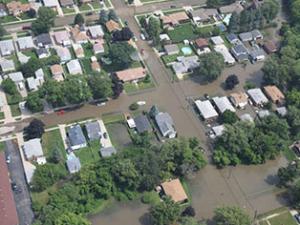Stormwater Management and Drainage Charge
block-detroitminew-views-block-news-events-block-1,News & Events*block-detroitminew-views-block-related-links-block-1,Related Links*block-detroitminew-views-block-video-playlist-block-1,Videos*documents-block,Documents*block-detroitminew-views-block-forms-block-1,Forms*block-views-block-faq-block-1,FAQs*block-detroitminew-views-block-district-map-block-1,District Map*block-views-block-council-office-directory-block-1,Office Directory*block-detroitminew-views-block-contacts-block-3,Contacts*block-detroitminew-views-block-contacts-block-4,Contacts*block-detroitminew-views-block-council-member-bio-block-1,Bio*block-detroitminew-views-block-sub-sections-block-1,Sections*block-detroitminew-views-block-web-apps-block-1,Web Apps*block-detroitminew-views-block-news-events-block-4,News*block-detroitminew-views-block-news-events-block-3-2,Events*block-detroitminew-views-block-contacts-special-block-1,Staff*block-detroitminew-views-block-statements-block-1,Statements*block-detroitminew-views-block-newsletters-block-1,Newsletters*block-detroitminew-views-block-newsletters-block-3,Ordinance*block-detroitminew-views-block-newsletters-block-2,Resolutions*block-detroitminew-views-block-newsletters-block-4,Memos
DWSD Stormwater Management
The Detroit Water and Sewerage Department launched the Stormwater Management Group in 2017 to improve wet weather management in the city of Detroit. The group coordinates the Drainage Charge Green Credit Program and the Green Stormwater Infrastructure Program.
Vision: To lead the nation in stormwater management best practices, and ensure Detroit’s stormwater infrastructure fulfills its functional purpose and best serves our citizens.
- where cost recovery efforts, permit requirements, codes and ordinances help the Detroit Water and Sewerage Department (DWSD) maintain clean water standards and advance beautification and economic goals.
- where green stormwater infrastructure and sustainable stormwater practices are alive and well, fostering healthy communities and growth.
Mission: To exceed DWSD customers' expectations through innovative and effective stormwater management that:
- Ensures the provision of clean water resources at equitable rates;
- Meets regulatory requirements;
- Protects citizens and property;
- Builds and maintains effective stormwater infrastructure; and
- Creates attractive, innovative green stormwater infrastructure practices that enhance Detroit’s sustainable landscape and promotes healthy communities and growth.
Stormwater Management Group Programs and Initiatives:
Overview of Stormwater in Detroit
When it rains in Detroit, stormwater falls on rooftops, streets, sidewalks and parking lots and then this stormwater flows into our sewer system. The sewer system in Detroit is a combined sewer system -- it carries both stormwater runoff and sanitary sewage. During wet weather, too much stormwater can overload the combined system. This might cause basement backups, street flooding, and polluted wastewater to flow into the Rouge River, the Detroit River, and eventually, Lake Erie.
We all share the benefits of healthy water and the consequences of overloading Detroit’s combined sewer system. We also share the responsibility for controlling the amount of stormwater that flows into the system.
Learning about Detroit Stormwater and Solutions
What is Green Stormwater Infrastructure and how can it help Detroit?
How Does Stormwater and Untreated Sanitary Sewage Get Into the Rouge River, the Detroit River and Lake Erie?
In southeast Michigan, approximately three million residents and thousands of businesses send wastewater down their drains each day to a network of sewer pipes that lead to the Detroit Water Resource Recover Facility (WRRF) which is operated by the Great Lakes Water Authority. The sewer pipes don’t only carry wastewater from toilets, showers, and drains—they also carry stormwater when there’s wet weather. When wastewater from homes and businesses mix with stormwater, the Rouge and Detroit rivers are in danger of becoming more polluted.
Stormwater in the Combined Sewer System. Combined sewers transport wastewater from homes and businesses with stormwater during wet weather in a single pipe. During storms, combined sewer systems collect the stormwater that runs off our streets and houses along with untreated sewage. That means the volume of flow in that single pipe can be 10 to 100 times greater than the volume of flow that passes through the pipe on a dry day. In southeast Michigan, 30 percent of the sewer systems (26 of 77 communities) that send flows to the WRRF are combined sewers.
During wet weather, there is a lot of pressure on the collection and treatment system. If flows exceed the capacity of the system, an overflow of untreated sewage and stormwater enters the Rouge and Detroit Rivers. These overflows are called combined sewer overflows, or CSOs. CSOs are a last resort to prevent sewer backups and basement flooding.
Stormwater in the Sanitary Sewer System. Many of the conventional sanitary sewers (i.e., not combined systems) in the remaining 70 percent of the service area in southeast Michigan take on stormwater flow from footing drains that are connected to the sanitary sewer rather than to a drain or sump pump in the basement. Like combined sewers, sanitary sewers with stormwater flows can become overloaded and cause sanitary sewer overflows, or SSOs, to the Rouge and Detroit rivers.
Stormwater in the Municipal Separate Storm Sewer System (MS4). There are small portions of Detroit, as well as portions of other suburban communities, that have pipes and other conveyances (e.g., ditches) intended to transport only stormwater, referred to as a municipal separate storm sewer system, or an MS4. Unlike wastewater in the combined sewer system and sanitary sewer system, stormwater that travels through the MS4 is never treated and goes directly into rivers and lakes. Approximately four percent of the Detroit system is an MS4. When there is too much storm water in the MS4, streets and homes can experience flooding.
How is GLWA Managing Stormwater?
The Great Lakes Water Authority (GLWA) is responsible for managing facilities and programs to prevent untreated CSOs, while DWSD is reducing the quantity and improving the quality of stormwater in Detroit.
Managing stormwater in the combined sewer system. GLWA staff manage and operate the collection system to prevent combined sewer overflows, or CSOs, from occurring. Facilities like retention treatment basins, or RTBs, temporarily store and treat combined sewage. From January through April 2014, these RTBs prevented more than 7.5 billion gallons of untreated combined sewage from overflowing into our waterways.
Visit the
GLWA Customer Outreach Portal
for more information on CSO facilities and efforts to manage pollution from the combined sewer system.
To prevent more overflows without expensive investments in more CSO facilities, DWSD is working to reduce the amount of stormwater that enters the combined sewer system through investments in Green Stormwater Infrastructure (GSI) practices. This is part of DWSD's Alternative Rouge River CSO Control Program, a 25-year phased plan that focuses on GSI solutions and right-sized CSO control facilities.
Managing stormwater in the municipal separate storm sewer system (MS4). For stormwater entering the separate storm sewer system, DWSD and GLWA are co-permit holders on a National Pollutant Discharge Elimination System (NPDES) MS4 permit. This permit authorizes DWSD to discharge stormwater from the system to local surface waters (Detroit and Rouge rivers). The permit requires DWSD to develop and implement a stormwater management program (SWMP) for Detroit. The SWMP includes six types of management activities (known as the six minimum measures) intended to improve the quality of stormwater before it enters the MS4.
If you have any comments or questions on the latest DWSD Stormwater Management Program Plan, please contact: [email protected].
- DWSD Stormwater Management Program Plan Progress Report - 2023
- DWSD Stormwater Management Program Plan Progress Report - 2019
- DWSD Stormwater Management Program Plan Progress Report - 2015
Outfall on Rouge River



CSO basin

Culvert

Rainfall to Results: The future of stormwater
Based on input from leading stormwater professionals, the Water Environment Federation (WEF) Stormwater Institute drafted a report,
Rainfall to results: The future of stormwater
that details the challenges, opportunities, and pathways to improving the nation's stormwater systems to make them more efficient, effective and sustainable.


